| Polaris RZR 800 Review
It has been rumored for months as the Ranger’s “Evil Twin”, but now it is the real deal. The RZR stands for “Razor”…. As in Razor sharp side-by-side. The all new Polaris Ranger RZR. It is smaller, lighter,and faster than any side-by-side currently on the market. It is incrediblyresponsive with lots of power provided by a twin cylinder 800 EFI engine, lowcenter of gravity and front/rear anti-sway bars. Looking at the RZR head-on, it looks very tippy, but from theside you can see the lowered seat placement and a longer wheelbase which willhelp keep it on four wheels.
Polaris Ranger RZR 800 Overview & Specifications Electronic fuel injection The RZR is powered by an 760cc EFI even-firing, twin cylinder engine that is mounted sideways behind the seats. The electronic fuel injection system constantly and automatically compensates for changes in altitude, pressure and temperature, making the RZR extremely reliable no matter where the rider chooses to go. In addition, the need for re-jetting after upgrades like high flow intake and exhaust systems should be eliminated (may need a EFI fuel controller to take full advantage). There are some reports that this engine puts out 40+ horsepower!
The good news is the 760cc EFI engine is not new to Polaris (also used in the Polaris Sportsman 800 EFI) so reliability in early models should be better. Power delivery is a bit twitchy. Since the RZR is fuel injected, the throttle isn’t really moving anything in a carburetor like the Rhino. A stiffer feel to the pedal would be nice. Power-to-weight The dry weight of the Polaris RZR is 100 lbs. less than the Rhino. With a larger engine (800cc delivers 30% more horsepower than the Rhino) and EFI, the RZR’s power-to-weight ratio is reportedly 44% better than a Rhino. It also reaches 35 mph 26% faster than a Yamaha Rhino. The RZR also has the highest top speed of any currently available side-by-side. A stock RZR can make it to the top ofSand Mountain, NV. Stock Rhinos can make it about one-half way up the hill. Big difference in power. Size At 102″ long, it is almost a foot shorter than the Yamaha Rhino (113.6). Not enough room for people to turn it into a four seat UTV. At 50″ wide, the RZR is narrow enough to be used on most ATV trails. Although the RZR is shorter, it actually has a longer wheelbase by almost two inches. The RZR is 4 1/2 inches narrower than the Rhino.
Another nice part about the length of the RZR at 102 inches is you can load it sideways on a trailer and still be legal on the road. The Rhino and Prowler are too long to sit sideways and still be within the maximum width of 102 inches. The RZR will also fit in the back of a truck much easier than a Rhino. Center of gravity With the traversally mounted engine placed behind the seats, Polaris was able to lower the seats by at least 7 inches to that the Rhino & Artic Cat. The lower center of gravity will help stability and responsiveness. Polaris thinks this is such and advantage they have a patent pending.
Weight bias is about 45 percent to the front and 55 percent to the rear. Suspension features – More travel out of the box The Rhino sports 7.3 travel front and rear. The Polaris RZR has 9″ of front wheel travel & 9.5″ of rear wheel travel.
The rear suspension is an “Rolled” Independent Rear Suspension (IRS) System that is canted backwards so as the wheels travel up, they also travel backwards to help absorb some of the shock. Polaris calls this feature “recessional wheel travel. The RZR is also the only side-by-side that is available with a front anti-sway bar. Front and rear anti-sway bars make the RZR more stable in hard cornering. We need to take a look at how easy it is to disable the anti-sway bar for rock crawling type use where the bars limit off-camber wheel travel. The front sway bar is pretty weak in the dunes. If you want to jump at all, I would recommend removing the front sway bar. The 2009 RZR S has much better suspension. 12″ of travel. 60″ wide. Fox Podium shocks. All Wheel Drive Polaris equipped the RZR with an all-wheel drive (AWD) traction system. The AWD is enabled or disabled via a dash-mounted switch. When enabled, the RZR senses wheel slippage and automatically engages the AWD. Then when traction is no longer needed, the system automatically reverts back to 2WD. In the dunes, I find it is more fun to run in 2 wheel drive. But I did find that the RZR would climb steep hills farther in AWD. Leg minders And it looks like Polaris did their homework and learned from Yamaha’s mistake. They include nets and deep foot wells to keep your legs in the vehicle during a roll-over.
Exhaust
And the exhaust “heat shield” will touch your plastic and melt it.
Radiator Plumbing
Seats
Seat Belts The Seat belts can be a bit sensitive when trying to retract the belt on un-level ground. Moving to level ground seems to help. Best solution is to swap to an aftermarket four-point harness. Air Filter There have been problems with the air filter letting debris into the engine. New aftermarket air filter setups will help cure this, but hopefully Polaris will come out with a fix for this problem. There is a TSB on all units made before August 2007. Check with your local Polaris dealer to see if the TSB applies to your RZR. Newer units have had some adjustments to help seal the intake, and 2009 RZRs are much improved.
Tilt Steering Wheel
“Roll” Cage
Leg Room
|

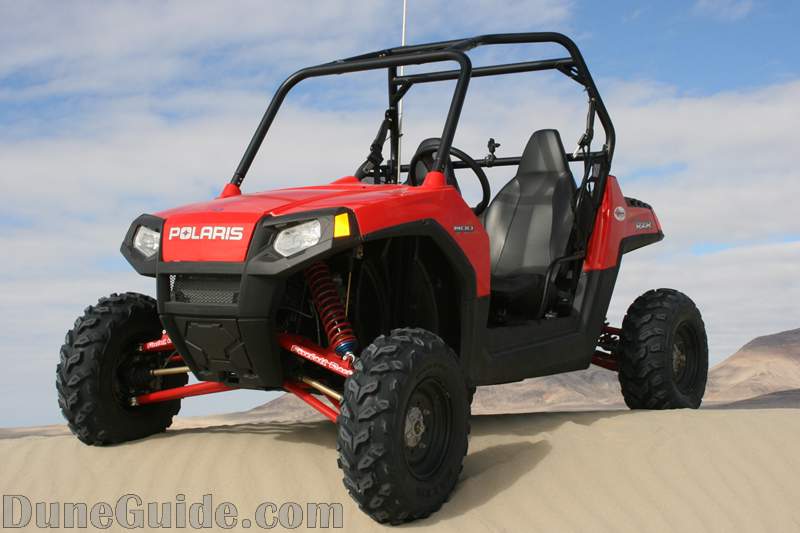




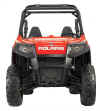
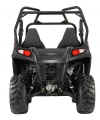
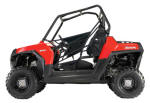


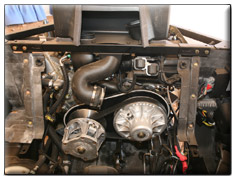
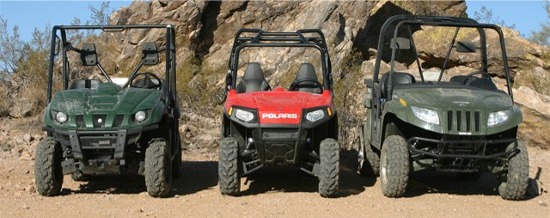
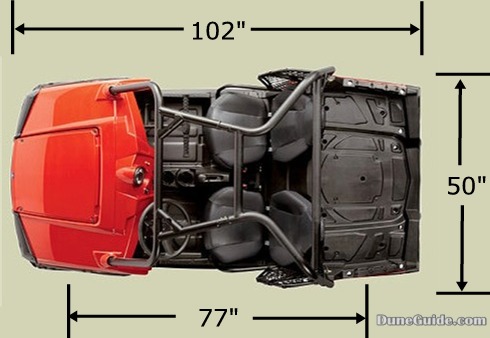
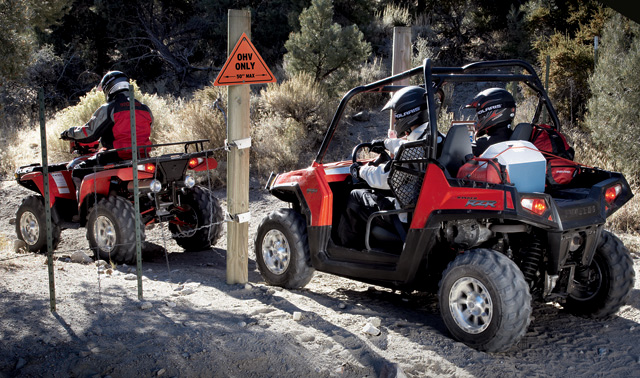
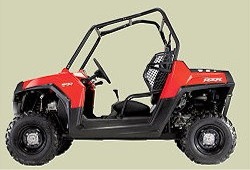
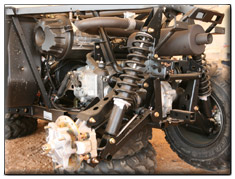
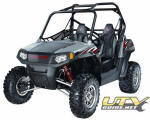
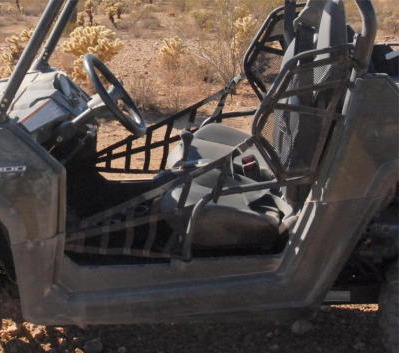
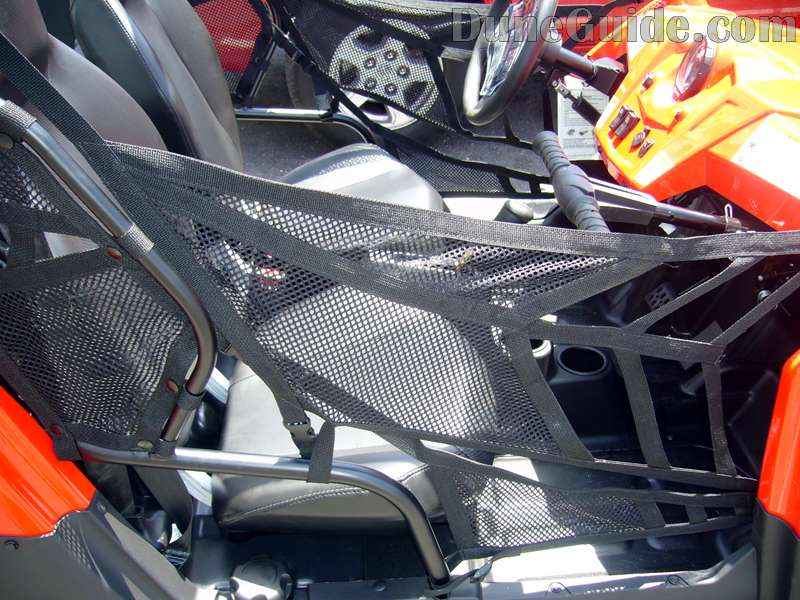
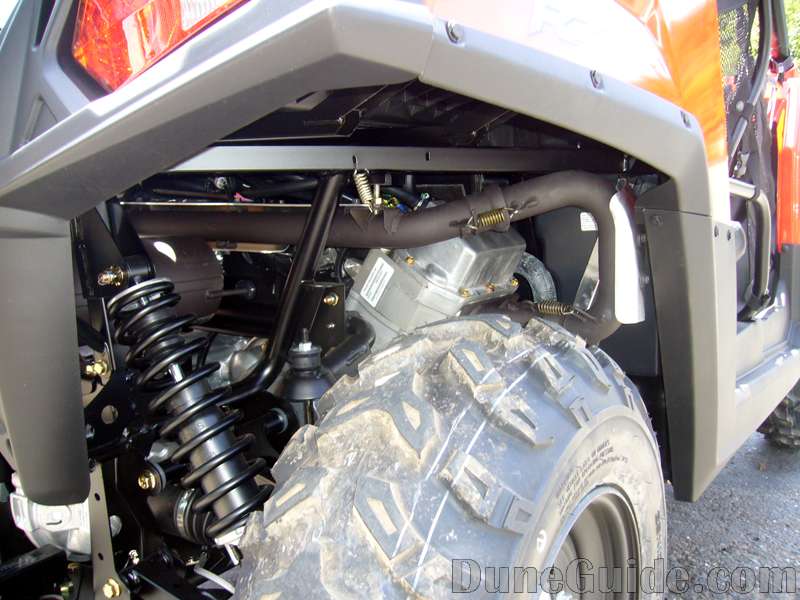



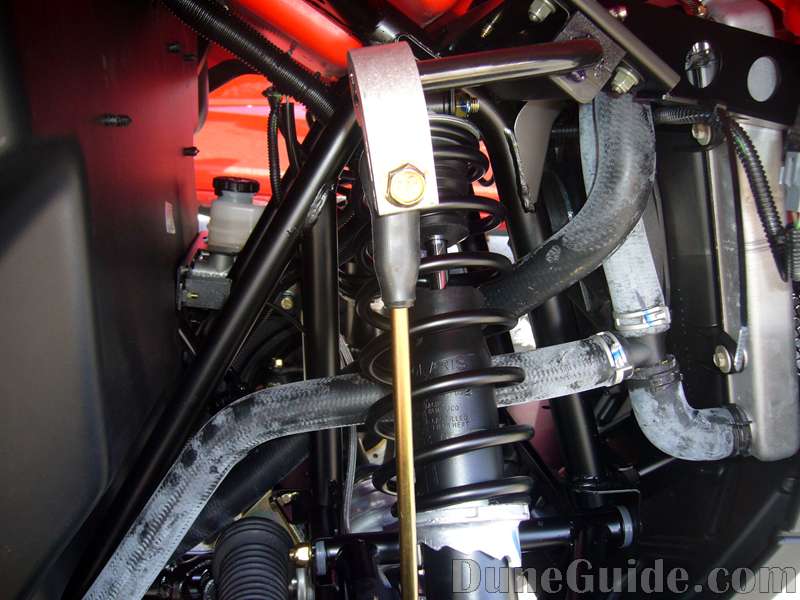
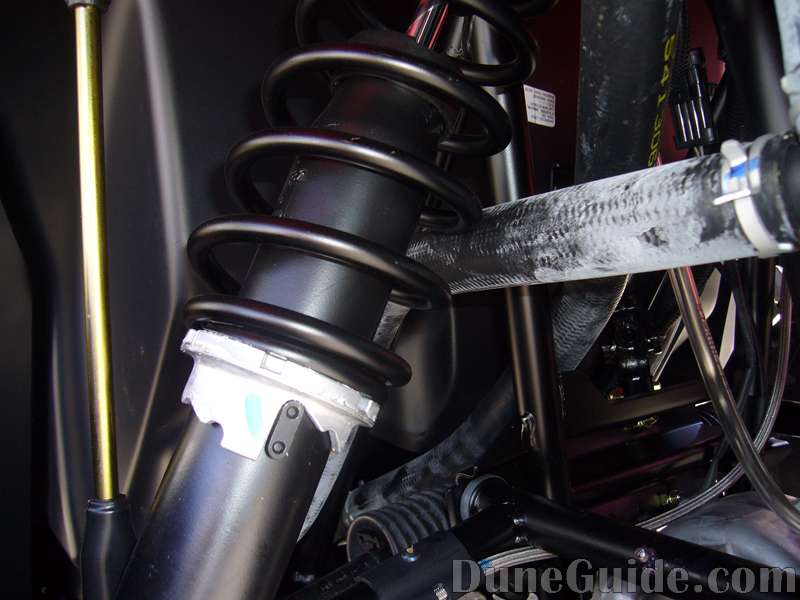

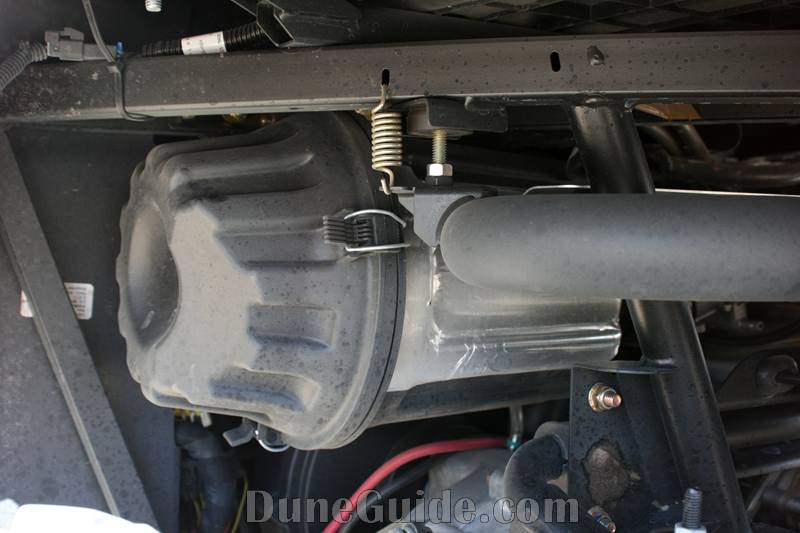




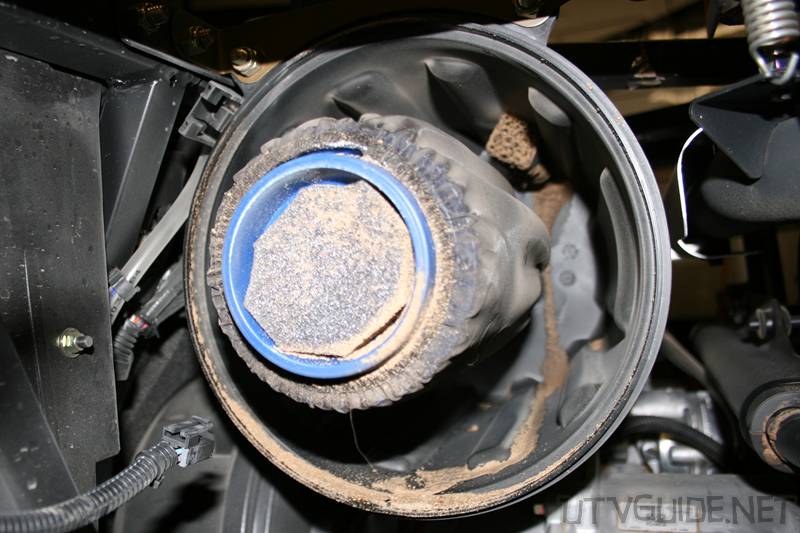

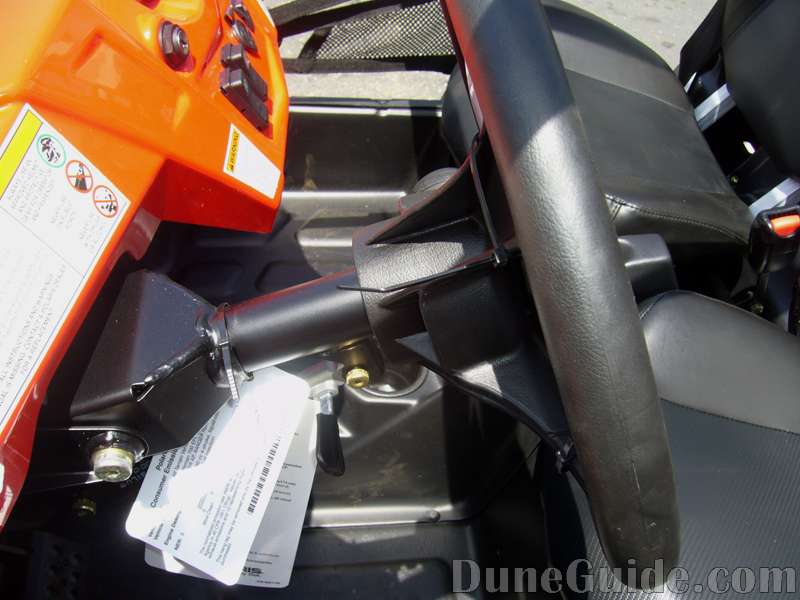
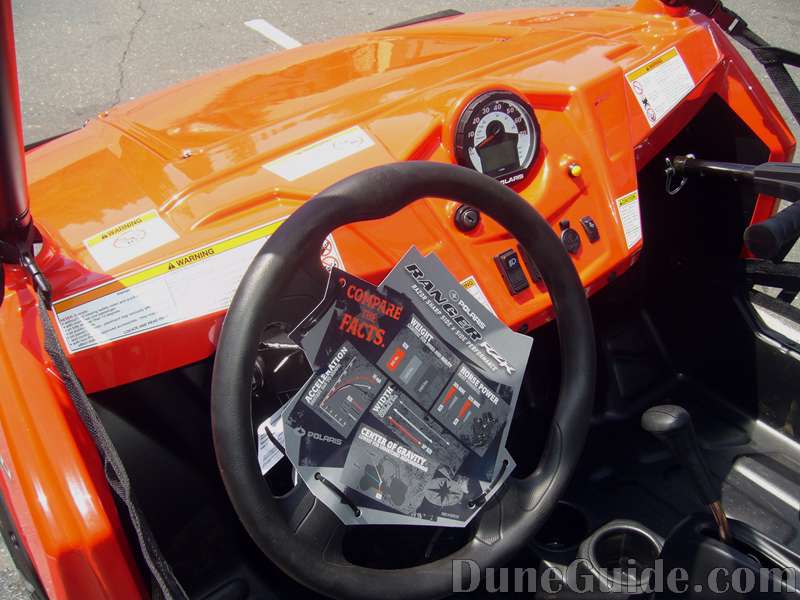
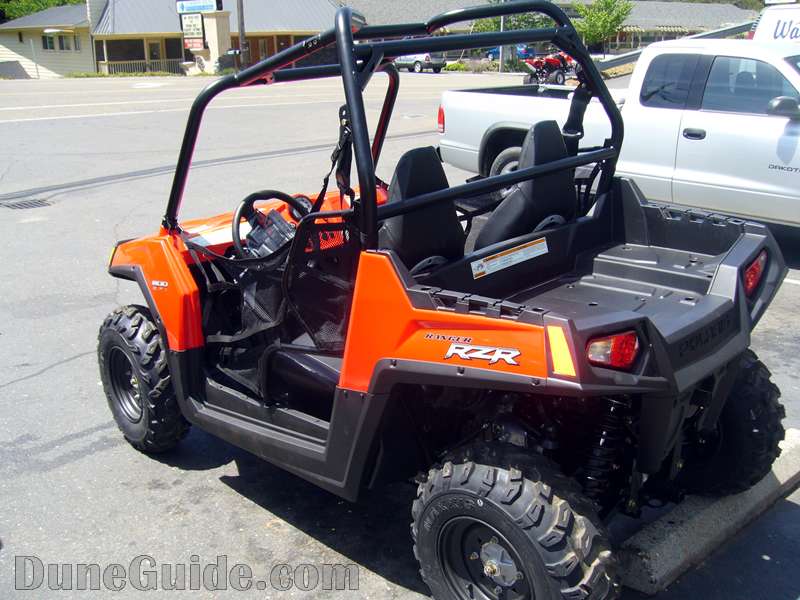
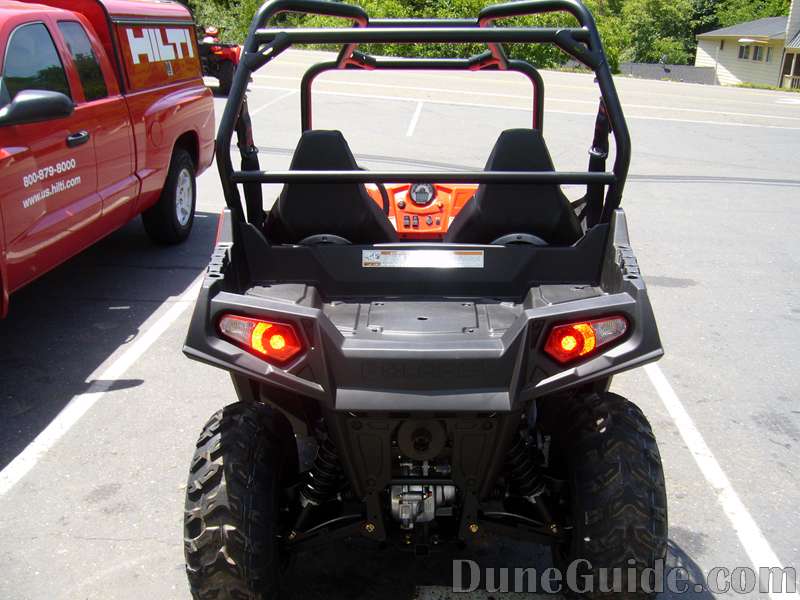
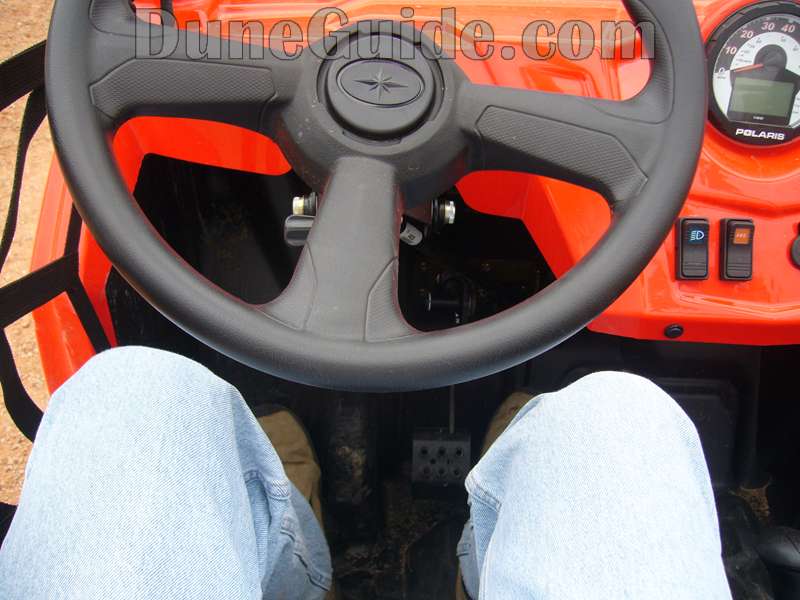
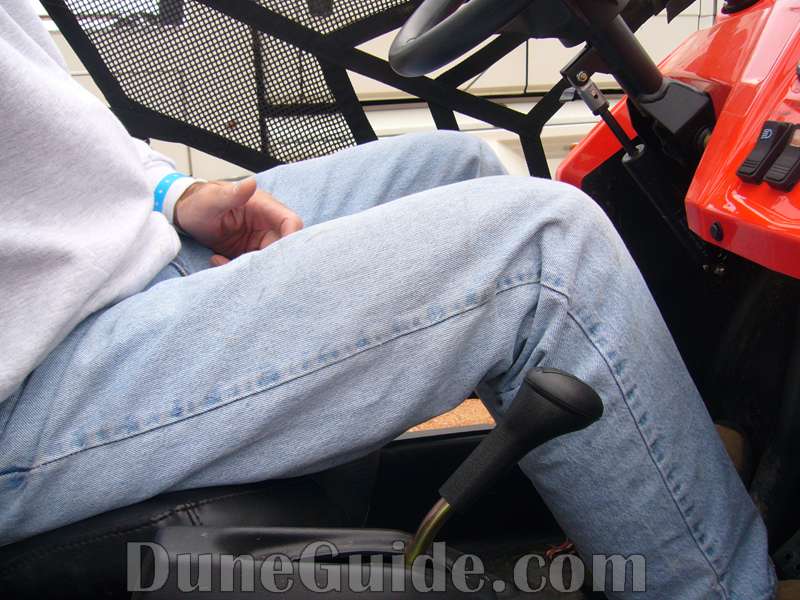

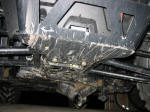
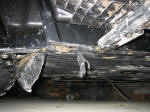
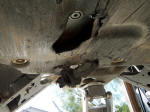
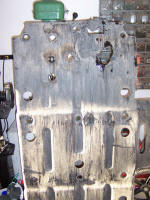
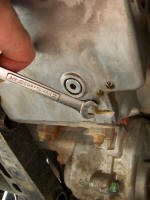



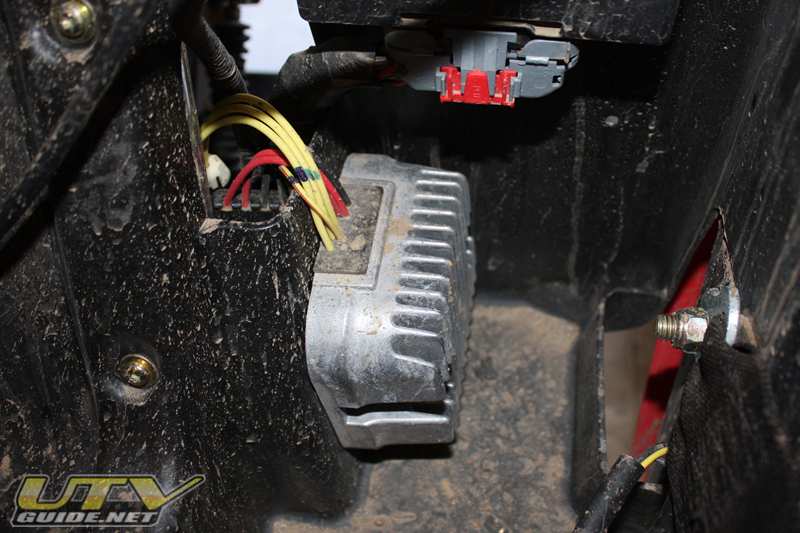
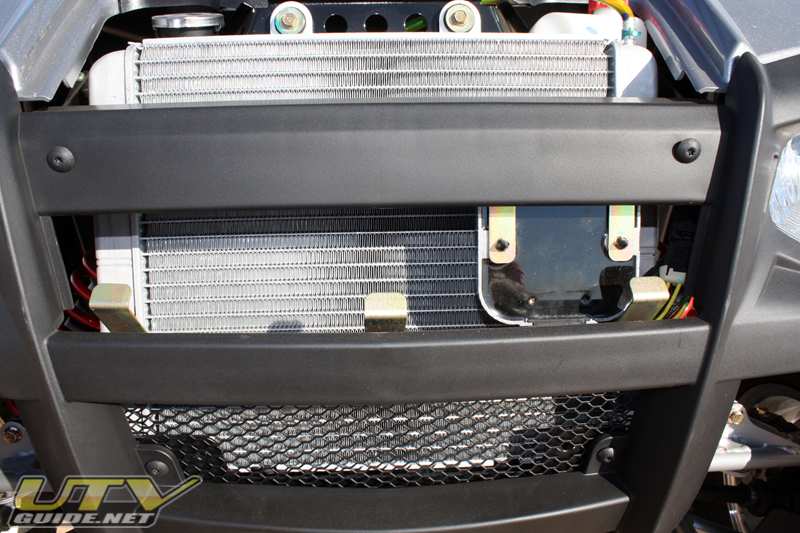








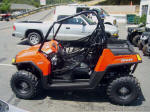
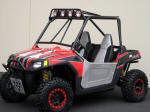
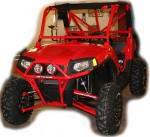


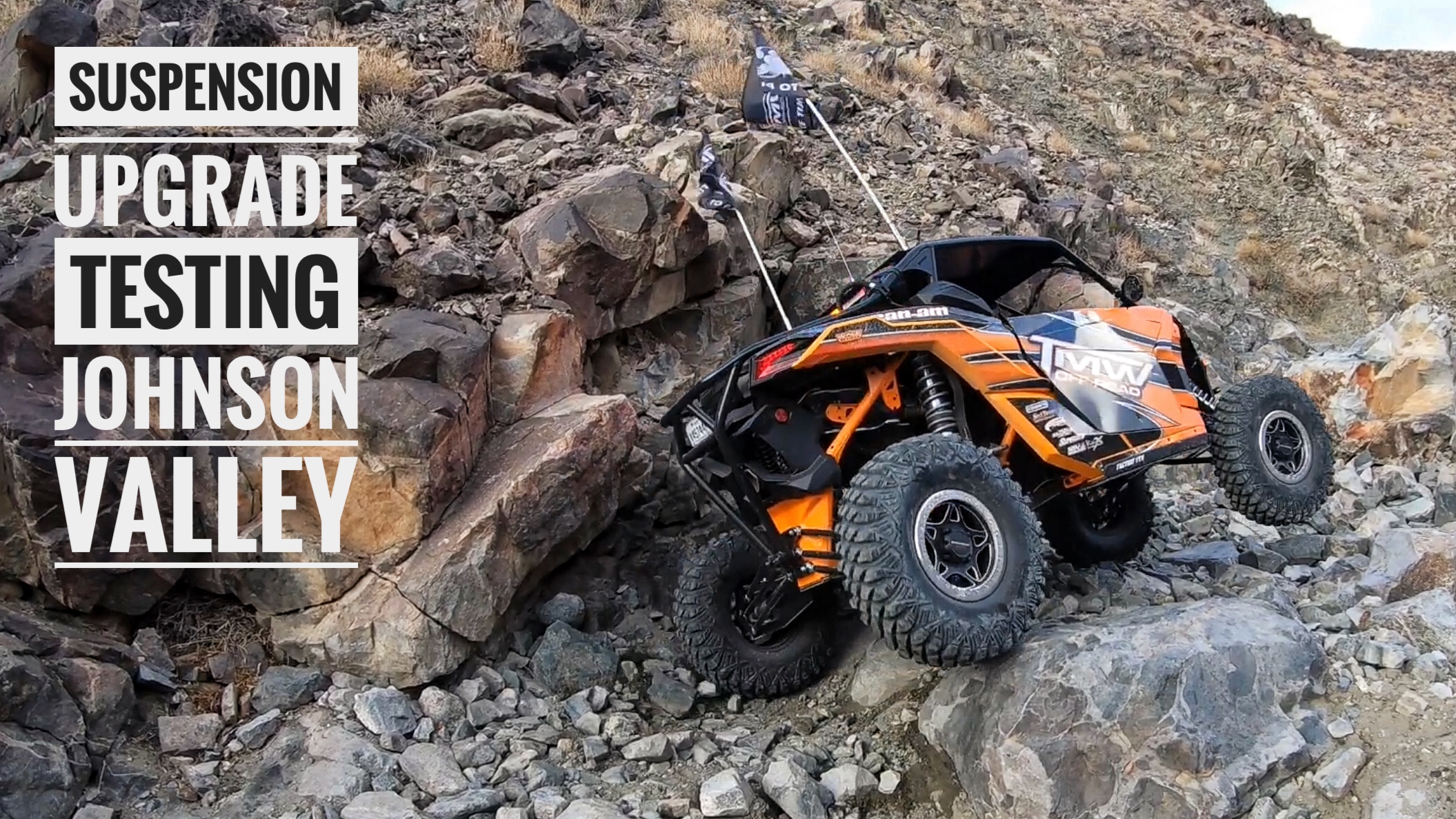
1 Comment
The Evolution of the Polaris RZR | SuperATV Off-Road Atlas
March 16, 2020 at 7:59 am[…] gravity and faster speeds than anything else on the market, made it the perfect adventure machine.Photo by UTV […]